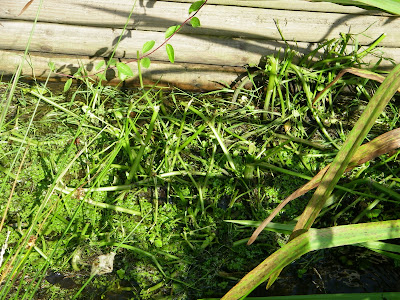.
Below, water vole droppings at the Country Park. (Click to enlarge, if necessary.)



 .
.You do need usually to get right down close to the bank if you're going to spot water vole signs. This time of year that means wearing thick trousers, waterproof boots, full-length sleeves and stout gloves. Carrying a stick to part the tall reeds, and dousing yourself in insect repellent's a must: a pair of gardening shears or sharp scissors doesn't go amiss, either. What you're looking for is droppings less than the length of a 1p coin, that are the same colour as the mud they're sitting on - you really do need sharp eyes. Any vegetation you push aside MUST be put back to cover the bank back up and protect the voles.
.Anyway, in summary, there are burrows and feeding at Steel Heath, and droppings and feeding in Whitchurch Country Park.
.






































